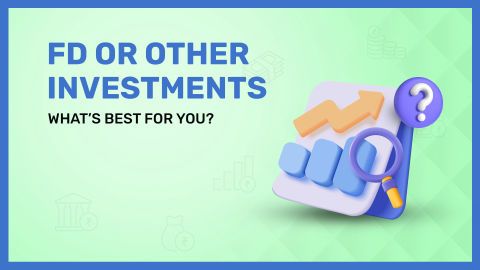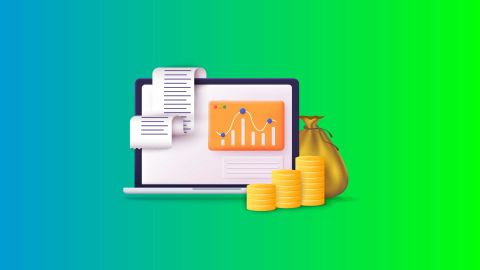Silver has always had a special place in Indian households. Whether it’s gifting a silver coin to a child during festivals like Diwali or Dhanteras, or keeping silver figurines of deities at home, the metal carries emotional and cultural weight. But when you step beyond traditions and look at silver as an investment, things get a little complicated.
Buying physical silver in the form of jewellery, bars, or coins — might seem natural, but it comes with hidden challenges. You have to worry about impurities, polishing to maintain shine, and the hassle of safe storage. Worse still, silver is bulky compared to gold, making storage costs even higher. For many investors, this makes physical silver more of a liability than a long-term wealth builder.
This is why Silver ETFs have recently gained attention in India. They give you the chance to invest in silver without the worries of purity, storage, or upkeep. In this article, we’ll explore what Silver ETFs are, how they work, their unique features, and why they may be a smarter choice than physical silver for modern investors. Exploring modern investment tools like Silver ETFs is about moving from traditional assets to simpler, cost-efficient options. The same approach applies to mutual funds, where starting small can lead to steady wealth creation. Start SIP today from Rs. 100
What is silver exchange traded funds?
Silver ETFs are simply a modern way of investing in silver without actually holding the metal in your locker. Instead, you buy units of an exchange-traded fund (ETF) listed on the stock exchange, and these units represent silver as an asset.
Unlike physical silver, you don’t have to check purity levels or pay for storage. The fund does that for you. All you need is a trading or demat account, and you can buy or sell Silver ETFs just like you would buy shares. Because they’re traded on exchanges, they’re also considered more liquid — meaning it’s easier to convert them back into cash whenever you need. Just like ETFs simplify exposure to silver, mutual funds simplify access to equity, debt, and hybrid markets — giving you diversification without complexity. Compare mutual funds side by side.
How does silver ETFs fund work?
The way Silver ETFs operate is fairly straightforward. These funds either directly invest in physical silver or in silver-related instruments. In India, SEBI has set clear rules to make sure the process is transparent and standardised.
For example, Silver ETFs here must invest in physical silver bars of 30 kg with 99.9% purity (following the global LBMA Good Delivery Standards). They are also allowed to invest up to 10% of their total assets in silver-based commodity derivatives. This gives them flexibility while ensuring safety for investors.
The entry barrier is also quite low. You can start a lumpsum investment with Rs. 5,000 or even set up a with as little as Rs. 100 per month. This means whether you are a first-time investor or someone looking to diversify further, Silver ETFs are accessible to all.
Features of silver ETFs
Silver ETFs come with features that make them stand out from traditional ways of buying silver. Instead of worrying about purity or storage, you get a simple market-linked instrument that mirrors silver’s price movements.
Some of the key features include:
- Market accessibility: Silver ETFs let you track real-time silver prices without dealing with commodities markets or physical handling.
- Cost-effectiveness: Since you don’t pay for storage or insurance, and fund charges are typically lower, more of your money goes into the actual investment.
- Liquidity: Because they are traded on stock exchanges, you can buy or sell units whenever the market is open, making them highly flexible.
- Hedging capability: Silver ETFs act as a hedge against inflation and currency depreciation, helping you preserve purchasing power during uncertain times.
- Diversification: Adding silver ETFs to your portfolio gives you exposure to a tangible asset that balances risk and can enhance overall returns.
Just as Silver ETFs add diversification and liquidity to a portfolio, mutual funds give you broader exposure across equity, debt, and hybrid categories in one place. Explore today’s top-performing mutual funds
Benefits of investing in silver ETFs
When you compare Silver ETFs with physical silver, the benefits become even clearer.
- Ease of trading: Just like stocks, you can buy and sell Silver ETFs during market hours.
- Cost efficiency: Since there are no storage or insurance costs, ETFs often turn out to be cheaper in the long run.
- Market accessibility: You don’t need to be a commodities expert. A simple trading account is enough to access the silver market.
- Diversification: Silver behaves differently from equities or bonds, so adding it to your portfolio can reduce overall risk.
- Inflation hedge: Silver has historically protected investors against inflation, making it a safe addition during volatile periods.
How to invest in silver ETFs?
Getting started with Silver ETFs is a lot like investing in stocks. Here’s a simple roadmap:
- Open a brokerage or demat account if you don’t already have one.
- Research available Silver ETFs in the market to see which fund matches your investment goals.
- Buy the ETF units through your broker using its ticker symbol, just like you would purchase shares.
- Track your investment over time to make sure it stays aligned with your broader portfolio and financial goals.
This simple process of buying ETFs mirrors how mutual funds work digitally where opening an account and starting your first investment takes only a few minutes. Set up mutual fund account today
How can you buy silver ETFs?
Buying Silver ETFs is almost the same as buying a stock. You don’t need to visit a jewellery shop or worry about purity certificates — just log in to your brokerage account.
Here’s what the process looks like:
- Open a brokerage or demat account with a registered broker, if you don’t already have one.
- Search for the Silver ETF you want to invest in by its ticker symbol.
- Decide how many units you’d like to purchase.
- Place your buy order during stock exchange trading hours.
Once the order is executed, the ETF units will appear in your demat account. The entire process is quick, digital, and saves you the trouble of storing physical silver.
How can you sell silver ETFs?
Selling Silver ETFs is just as easy as buying them. You don’t need to visit a dealer or negotiate resale value.
- Log in to your brokerage account.
- Enter the ticker symbol of the Silver ETF you hold.
- Choose how many units you’d like to sell.
- Select your sell order type — market order (at current price) or limit order (at a price you set).
- Confirm the trade.
The money from the sale is credited to your account within a couple of business days. This ease of entry and exit makes Silver ETFs much more liquid than physical silver, where selling often involves time, effort, and additional charges.
Taxation of silver ETFs
While Silver ETFs are convenient, it’s important to understand how they are taxed. In India, they are treated like debt investments.
- If you hold them for less than 3 years (36 months), the gains are considered short-term capital gains (STCG) and are taxed as per your income tax slab.
- If you hold them for more than 3 years, the gains are treated as long-term capital gains (LTCG) and taxed at 20% with indexation benefits.
Understanding taxation helps you plan investments better. Mutual funds also come with different tax rules depending on category, making it important to compare before deciding. Explore tax-saving ELSS funds today
Conclusion
For centuries, silver has been cherished in Indian homes for its cultural and emotional value. But when it comes to investing, holding silver in physical form often brings more challenges than rewards — from concerns about purity and shine to the cost and hassle of safe storage. That’s where Silver ETFs step in. They allow you to enjoy the financial benefits of silver without dealing with its physical drawbacks. With features like liquidity, ease of trading, and accessibility even with small investments, Silver ETFs make it simpler for both new and experienced investors to add silver to their portfolios.
The Bajaj Finserv Mutual Fund Platform serves as an essential resource for individuals navigating investment intricacies or contemplating building endowments. Offering access to a wide array of over 1000 mutual fund schemes, it caters to diverse investment goals and strategies. More than just a fund management tool, the Bajaj Finserv Platform acts as a collaborative partner, equipped to provide expert guidance and support at every stage of the investment journey, ensuring a meaningful impact.




